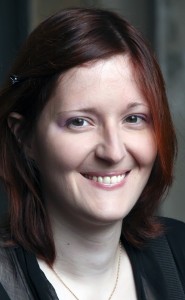leggi in italiano »
 In the past days Neapolitan Club published the electoral programs of two candidates to become President of the Italian Bridge Federation (FIGB). It is a pleasure to see that they both care about teaching activities, because only through good teaching bridge will have a future. The UK is divided with respect to bridge. The qualification we are talking about here is offered by the English Bridge Union (EBU), and although it cannot be obtained in Scotland, Wales, or Ireland, it is open to anybody.
In the past days Neapolitan Club published the electoral programs of two candidates to become President of the Italian Bridge Federation (FIGB). It is a pleasure to see that they both care about teaching activities, because only through good teaching bridge will have a future. The UK is divided with respect to bridge. The qualification we are talking about here is offered by the English Bridge Union (EBU), and although it cannot be obtained in Scotland, Wales, or Ireland, it is open to anybody.
The first step for the soon-to-be teachers is attending a two-day course where teaching techniques are introduced and students have to simulate real classes. Attending this course gives a first certificate.
In order to become a “qualified teacher”, the teacher has to pass an exam that tests his bridge knowledge (bidding, leads, defense, declarer play) and his teaching ability (how to answer questions).
After the teacher gains some real experience (usually after teaching for two years to students of all levels), he can try the last exam, similar to the first one in structure, but more difficult. If he passes this exam, he becomes a professional teacher.
These courses have nothing special or better compared to the FIGB courses. The crucial difference from the FIGB is that after the first exam, the teacher gets a password to access a private area of the EBU website, containing hundreds of hands with commentary, divided by topic and difficulty level (they can be found in .pdf or .doc format, thus editable). Not only that. The website offers these hands also in .dlm format, so if the teacher has access to a Duplimate in his club, or a HandyDup (a manual duplimate recently introduced on the market by Jannertsen), he can deal the hands, halving the preparation time.
The website is constantly updated with new hands and materials (flowcharts, schemes, tables, class programs) and all teachers can share their documents through John Pain, who manages the website. For instance, if a teacher writes a flowchart on how to choose the opening lead, he can send it to John Pain who then publishes it on the website, available to all for download.
Moreover the EBU publishes two books, “Beginning bridge” and “Continuing bridge”, which both come with a practice book with extra hands. A copy of each volume is given for free to all teachers, who are encouraged to follow their structure and contents. The EBU Teachers’ Association (EBUTA) also publishes two newsletters (both in paper and online): Ruffian, to inform students of the forthcoming activities dedicated to them, and Accolade, to inform teachers of the forthcoming teaching activities (such as simultaneous pairs, tournaments, teaching weekends).
This system has many advantages: first of all it ensuressome uniformity in what is taught and it helps teachers a great deal. For instance, let us take a part time teacher, who runs six courses a week. For each group, if they are all different, he needs to write a specific set of hands, say six to eight. This adds up to 36-48 hands to be imagined, written, commented, and dealt. It is obvious that this takes a lot of time. However, thanks to the EBU material, our hypothetical teacher does not need to write hands (unless he wants to edit them for some reason), and thanks to .dlm files he can deal them with his club’s Duplimate or his HandyDup. Result: the teacher can invest time in what really matters, i.e. thinking about how to teach and how to explain the topics, instead of putting cards inside boards.
Some clubs already have their own databases accessible to the teachers of that clubs. However, in my opinion, FIGB could create a nation hands database, following the English model, accessible to all teachers.
***
Laura Cecilia Porro
April 07, 2012
Laura Cecilia Porro was born in Milan in 1986, then moved to Dundee (Scotland) in 2008 in order to attend a PhD course in Philosophy at the University of St Andrews. In 2007 she started playing bridge at the Bridge Institute in Milan, with teachers Giagio Rinaldi and Franco Di Stefano. In 2009 she became a qualified EBU teacher, and in 2011 she became a professional teacher. Since 2009 she has been teaching various courses in Eastern Scotland, including a course for the University of St Andrews with nearly 40 students. Starting October 2012, she will start teaching at London’s Acol Bridge Club, run by Andrew McIntosh.